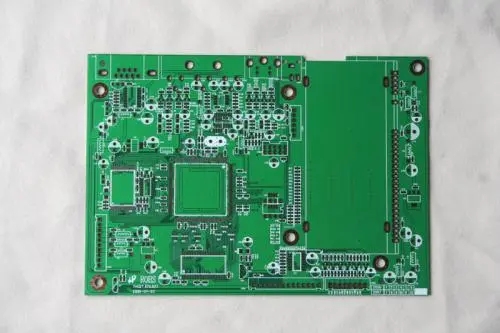The general literature thinks that the power cord should be as thick as possible, which I can’t completely agree with. Only in high-power (average power supply current may reach 1a within 1 second), it is necessary to ensure sufficient power line width (in my experience, each 1a current corresponding to 50mil can meet the needs of most occasions). If it is only to prevent signal interference, the width of the power line is not critical. Even, sometimes a thinner power cord is more advantageous! The quality of the power supply generally lies not in its absolute value, but in the fluctuation and superimposed interference of the power supply. The key to solving power interference is the filter capacitor! If your application does have demanding requirements on power quality, don't save money on filter capacitors! Pay attention to the following points when using filter capacitors:

The power input end of the entire circuit should have "total" filtering measures, and various types of capacitors should be matched with each other, "the same must not be less", at least not bad. For digital systems, there must be at least 100uf electrolysis + 10uf piece of tantalum. +0.1uf patch + 1nf patch. Higher frequency (100khz) 100uf electrolysis + 10uf piece of tantalum + 0.47uf patch + 0.1uf patch. AC simulation system: For DC and low-frequency simulation systems: 1000uf | 1000uf electrolysis + 10uf tantalum + 1uf patch + 0.1uf patch.
There should be a "set" of filter capacitors around every important chip. For digital systems, a 0.1uf patch is generally enough. For important or larger working current chips, a 10uf tantalum or 1uf patch should be attached. The chip with the highest operating frequency (cpu, crystal oscillator) should also be combined with 10nf. |470pf or a 1nf. The capacitor should be as close as possible to the power pin of the chip and connected as directly as possible. The smaller the capacitor, the closer it should be.
For the chip filter capacitor, the section within (the filter capacitor to the chip power pin) should be as thick as possible, and it is better if multiple thin wires can be used side by side. With the filter capacitor providing a low (AC) impedance voltage source and suppressing AC coupling interference, the power line outside the capacitor pin (referring to the section from the main power supply to the filter capacitor) is not so important. The line width does not need to be too thick, at least There is no need to take up a lot of board area for this. In some analog systems, the power input is also required to adopt an rc filter network to further suppress interference, and a thinner power line sometimes just doubles as the resistance in the rc filter, which is beneficial.
For a system with a large operating temperature range, it should be noted that the performance of aluminum electrolytic capacitors will decrease or even lose their filtering effect at low temperatures. At this time, appropriate tantalum capacitors should be used instead. For example, replace 470uf aluminum with 100uf tantalum|1000uf aluminum, or replace 100uf aluminum with 22uf piece of tantalum.
Pay attention to aluminum electrolytic capacitors not too close to high-power heating devices.
The above is the introduction of power line wiring and power filtering in PCB design. Ipcb is also provided to PCB manufacturers and PCB manufacturing technology